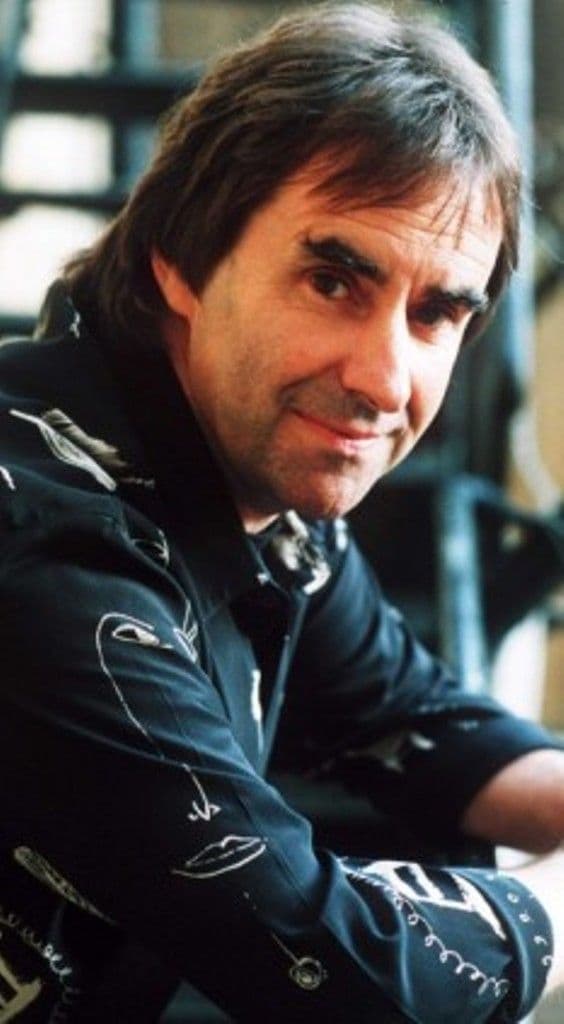
A Timeless Dance with Love: Chris de Burgh’s “The Lady in Red”
Ah, to be transported back to a time when a melody could capture the very essence of a moment, a memory, a feeling so profoundly that it felt etched into the fabric of your soul. For many of us, that feeling is inextricably linked with Chris de Burgh and his iconic ballad, “The Lady in Red.” It’s a song that, even decades later, evokes a soft smile, a gentle sigh, and perhaps a fleeting image of a special someone who once, or still does, make your world feel a little brighter. This wasn’t just a fleeting pop hit; it was a phenomenon, a song that resonated deeply with millions across the globe, climbing to the pinnacle of popularity and solidifying its place in the annals of romantic music.
Released in 1986 as part of his “Into the Light” album, “The Lady in Red” wasn’t merely a success; it was a juggernaut. It swept across the charts, becoming a number one hit in numerous countries, including the United Kingdom, Ireland, and Canada, and soared to the top 5 on the prestigious Billboard Hot 100 in the United States. Its ubiquity was undeniable; you couldn’t turn on a radio, step into a shopping mall, or attend a wedding without hearing its distinctive, lilting melody. It became the soundtrack to countless first dances, anniversary celebrations, and quiet moments of reflection, a testament to its universal appeal and the undeniable emotional chord it struck with listeners.
But what lies beneath the surface of this seemingly simple love song? The magic of “The Lady in Red” isn’t just in its melody or Chris de Burgh’s earnest delivery; it’s in the heartfelt, deeply personal story that inspired it. The song is a tender tribute to his wife, Diane. De Burgh himself has often recounted the genesis of the song, describing a vivid memory of seeing Diane for the first time after a period of separation, perhaps at a party or a social gathering. She was, fittingly, wearing a red dress, and in that moment, time seemed to stand still. He was utterly captivated, struck anew by her beauty and the depth of his affection. It wasn’t about grand gestures or dramatic declarations; it was about the simple, profound realization of how much she meant to him, how completely she belonged in his life, and how profoundly he had underestimated the everyday wonder of her presence.
This personal anecdote elevates the song from a generic love ballad to something far more intimate and relatable. It speaks to the quiet epiphanies we all experience in relationships – those moments when, amidst the hustle and bustle of daily life, we suddenly see our partner with fresh eyes, appreciating anew the person we fell in love with. The lyrics, “I’ve never seen you looking so lovely as you did tonight,” aren’t just a compliment; they’re an acknowledgment of a rediscovery, a rekindling of that initial spark. The song’s genius lies in its ability to take such a specific, personal experience and translate it into a feeling that anyone who has ever loved deeply can understand. It’s about seeing beyond the familiar, and recognizing the extraordinary in the ordinary.
Furthermore, “The Lady in Red” taps into a deep well of nostalgia, particularly for those who came of age in the 1980s. It harks back to an era of softer, more melodic pop music, a time when heartfelt lyrics and sincere vocal performances held sway. For many, it’s not just a song; it’s a time machine, instantly transporting them back to proms, school dances, and quiet evenings spent with loved ones. It evokes the innocence and sincerity of romantic love as it was often portrayed in that decade, a stark contrast to some of the more cynical or complex narratives that emerged later. The song’s enduring popularity across generations speaks to its timeless message of love and appreciation, a message that never truly goes out of style. It serves as a gentle reminder to cherish those moments of connection, to truly see and appreciate the people who bring color and warmth into our lives, and to never take the magic of a shared glance or a simple dance for granted. It’s a testament to the enduring power of a beautifully crafted melody and a story told from the heart, proving that sometimes, the simplest sentiments are the most profound.